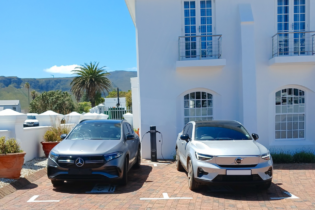The process of regional integration in the East African community is largely premised on the ease of movement and communication. The ease with which people move from one country to another plays a major role in how integration will occur, if at all we are ever to see East Africa as one country.
To a great extent, East Africans can now move easily across borders with minimal restrictions at the immigration posts. However, the challenge remains on the cost of this movement. The cost of movement is largely influenced by the availability of transport means.
Already, buses are ferrying the largest number of East Africans moving from one country to another but more people would be travelling if other means of transport were as convenient as the buses. With the borders operating 24 hours, buses are always on the move.
The same cannot be said about other sectors. Air transport for example has never seen any form of balance since the collapse of the East African Airways. Right now, Kenya Airways takes the lion’s share of the air industry in the region with others like Rwandair fighting for the remaining crumbs.
Kenya Airways is so dominant that when Pres. Museveni was launching Air Uganda he talked about his frustration with Kenya Airways, which he claimed was torturing his people by scheduling flights late in the night.
It is encouraging that Rwanda has slowly built a national carrier from scratch to not only compete with other aviation players but also to provide its people with air transport and pride. Burundi and Tanzania still have something they can call an airline, while Uganda has nothing much to show in that area save for the name Air Uganda.
The biggest challenge here is the fact that air transport in the region is still very expensive and continues to be expensive, thanks to the airport fees charged at the various international airports. In fact, Kenya airports Authority will double its charges starting with the month of July.
The move will clearly make tickets more costly for passengers who often have to go via the airport for many of their trips outside the region. Apparently the increase is aimed at raising money for expanding the airport to deal with the rising passenger numbers.
With the airline costs remaining very costly, one would expect the region to exploit the option of water transport. Unfortunately, this is not the case. A region blessed with a lake like Victoria that is shared by Uganda, Kenya and Tanzania would be best served by a robust water transport system.
The towns of Kampala, Kisumu and Mwanza would be better off if there were regular ships to transport people from one town to another. Instead every now and then we read in the papers of a ferry or ship that has sunk and with it, the lives of hundreds who are packed on the very old piece of work. The same could be said of lakes like Kivu and Tanganyika that could also be used to link the people of Rwanda, Democratic Republic of Congo, Burundi and Tanzania. But there is hardly any water transport system to talk of on some of these other water bodies. Another key area is the rail transport system. This one has been on its knees for ages yet t could transform the economies of the East African region tremendously. There is simply too much cargo that needs to be moved at a cheaper cost to both the business people and the health of our roads. It is a shame that in 2012 we are still transporting fuel from Mombasa to areas as far as Goma in DRC by road. Imagine how much better our roads would be if the number of heavy trucks using them was reduced significantly? Still on the railway issue, a line inking all the countries could also be used to offer very cheap passenger travel allowing those who cannot afford other means to also move around the region. I must also point out my disappointment with the way the issue of an oil pipeline was handled. Even now that oil has been discovered in Uganda. The issue of extending the pipeline from Eldoret all the way down to Kampala, Kigali and Bujumbura seems to have gathered so much dust you may think I am just making this up. How then, do we expect the region to integrate when the cost of moving people and goods is still so prohibitive? God bless EAC.






